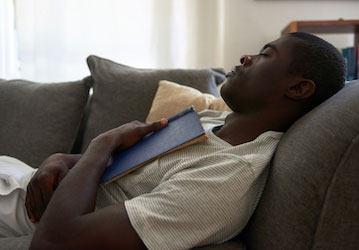HPRC recently asked Department of Defense sleep experts about napping, and they emphasized that the “ideal” nap length to make up for lost night sleep is the longest one you can get! Not only is it impractical to time your nap duration to complete one or more "sleep cycles" (or to avoid a specific “sleep stage” by setting a time limit for your nap), but there is no physiological reason even to try because cycling through various stages of sleep in a predictable way happens only under idealized laboratory conditions.
During operations, Warfighters are generally sleep-deprived and will go into deep sleep soon after starting to nap. The so-called "sleep inertia" problem (temporarily impaired performance upon awakening) isn't the problem it's trumped up to be. Sleep inertia lasts only a few minutes and dissipates rapidly; the long-term benefits of sleep generally far outweigh the temporary risk of an error due to “sleep inertia.”
Here are some sleep/nap guidelines suggested by DoD experts:
More sleep is better.
- It is impossible to get too much sleep. (Seeming to need more sleep than normal is probably a symptom of another problem, such as depression.) The general rule of thumb is seven to eight hours of sleep every 24 hours.
Use naps to maximize how much sleep you get every 24 hours.
- If you do not have a sleep debt (that is, if you get the recommended seven to eight hours of sleep at night), you don’t need to nap. If you nap too much, you risk having trouble falling or staying asleep that night.
- If you get less than seven to eight hours of sleep every 24 hours, then you have a sleep debt. If this happens, use naps to make up the difference.
- For a nap to be effective, you must actually SLEEP. “Dozing” does not benefit the brain.
- The best times to nap are when your brain clock is naturally primed for sleep: from about 2300–0800 and again from about 1300–1500.
Problems sleeping at night?
- Nap wisely but sparingly. Napping can help make up for insufficient nighttime sleep, but naps also can cause problems falling or staying asleep later. If you nap and then cannot fall asleep or stay asleep that night, cut back on your daytime napping.
- If you need to nap for safety reasons (such as for driving), try to take a short (30–60 minute) nap in the late morning or early afternoon (for example, right after lunch)—just enough to take the edge off your sleepiness.
The bottom line? Your brain requires sleep to function optimally. If you do not get the recommended seven to eight hours of sleep each night, then napping will reduce your sleep debt. Nap when you can and as long as you can to get the seven to eight hours of sleep you need every 24 hours.
